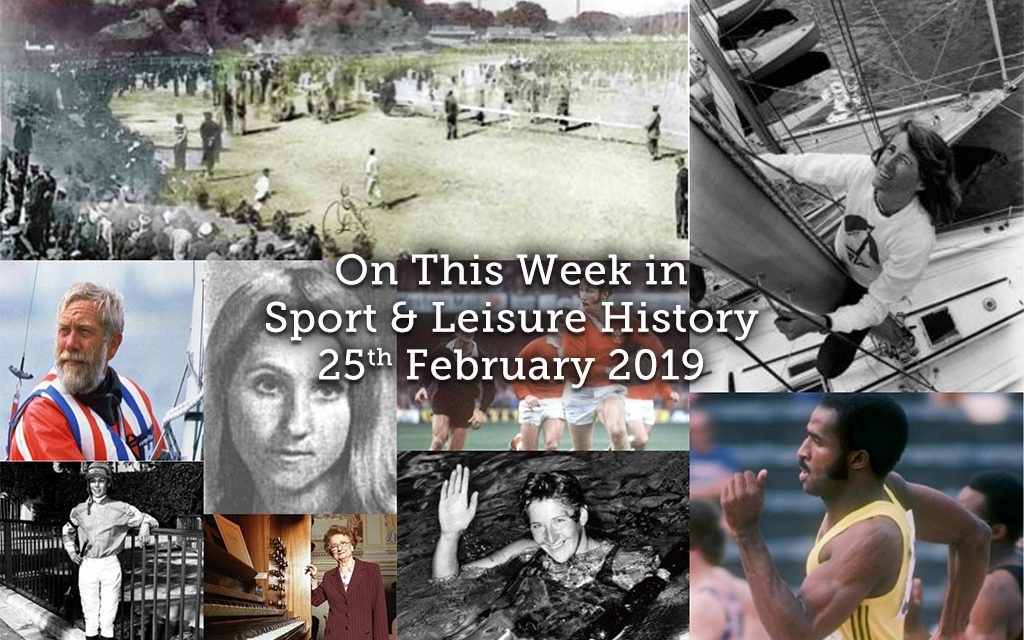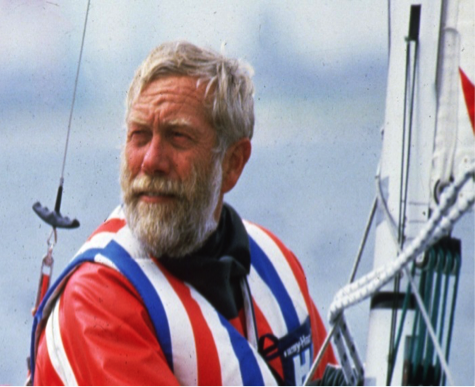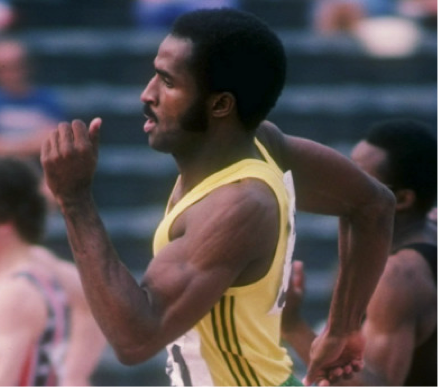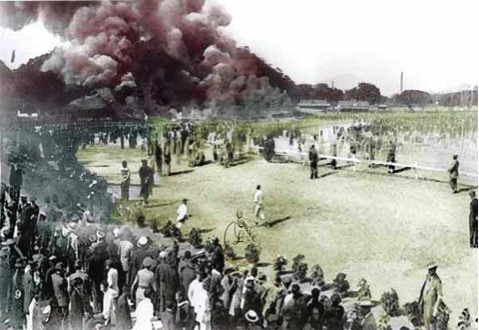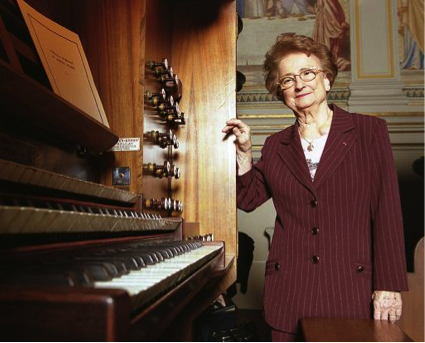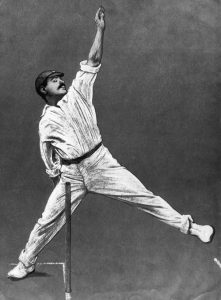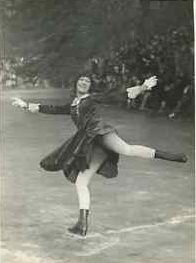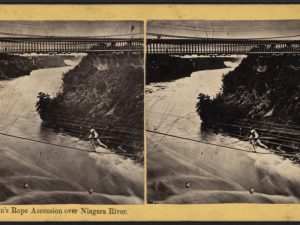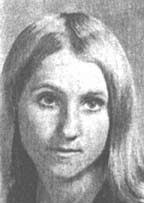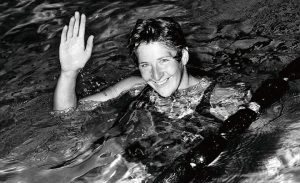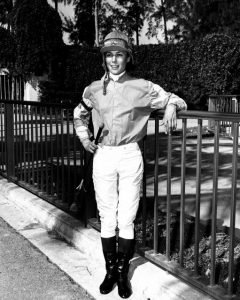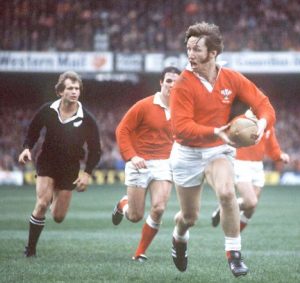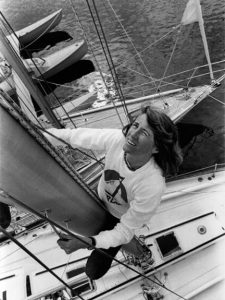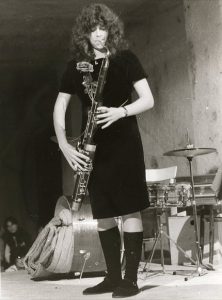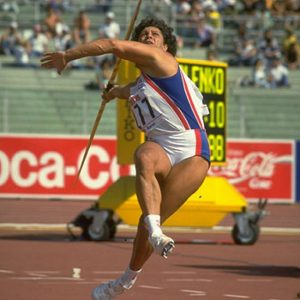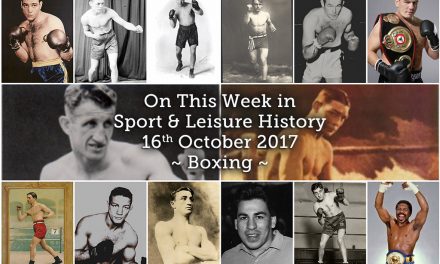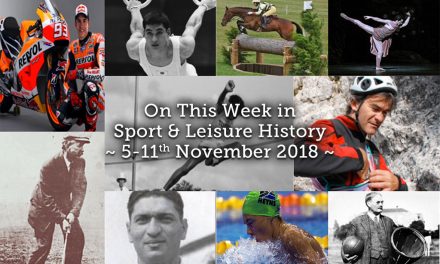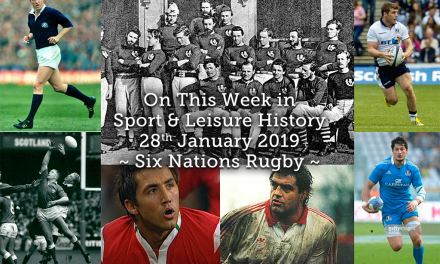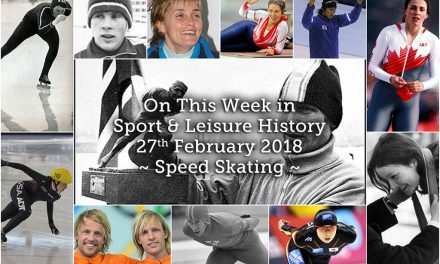25th
- Danish yachtsman Paul Elvstrøm was born today in 1928. He won four Olympic gold medals and eleven world titles in eight different types of boat, ncluding Snipe, Soling, Star, Flying Dutchman and Finn. Elvstrøm competed in eight Olympic Games from 1948 to 1988, being one of only six persons ever (the others are sailor Ben Ainslie, swimmer Michael Phelps, wrestler Kaori Icho, and athletes Carl Lewis in the long jump and Al Oerter in the discus) to win four consecutive individual gold medals (1948–60), first time in a Firefly, subsequently in Finns. In his last two Olympic games he sailed the very high performance Tornado Catamaran class, which, in those days, was normally sailed by two young men, with his daughter Trine Elvstrøm as forward hand.
- Australian athlete Herb Elliott was born in 1938. Elliott won the Commonwealth Games 800m and mile titles in 1958 and that same year, in Dublin, he reduced the world mile record to 3:54.5 He won the Olympic 1500m title in 1960.
- The 6th Winter Olympics closed on this day in 1952, in Oslo, Norway.
- Jamaican athlete Don Quarrie was born in 1951. One of the world’s top sprinters during the 1970s. At the 1976 Olympics he was the gold medallist in the Olympic 200m and silver medallist in the 100m. In all, he competed in five Olympic Games and won four Olympic medals during his career. He equalled the 200m world record in 1971 and equalled the 100m world record in 1976. He has lifetime bests of 10.07 seconds and 19.86 seconds for the events. He won 100m/200m sprint doubles at the 1970 Commonwealth Games, 1971 Pan American Games, and 1974 Commonwealth Games. He was the first male to defend either the 100m or 200m title at the Commonwealth Games and a 100m win at the 1978 Commonwealth Games makes him the only person to have won that title three times. He won nine gold medals in the sprints at the Central American and Caribbean Championships in Athletics from 1971 to 1981.He has received recognition both on and off the field. He was a five-time winner at the Jamaican Sportsperson of the Year and a statue of him is positioned at the entrance to Jamaica’s National Stadium. There is also a school (Donald Quarrie High School) that bears his name in Eastern Kingston. Reggae artists have paid respect to his achievements with songs including “Tribute to Donald Quarrie”, one by Joe Gibbs and The Guerrillas and one by Bongo Herman.
- On this day in 1964 22 year old Cassius Clay was crowned world heavyweight champion after beating Sonny Liston in one of the biggest upsets in boxing’s history Clay, from Kentucky, was announced the winner after the hot favourite retired at the end of the sixth round in Miami. When the bell rang for the start of the seventh round, Liston stayed on his stool in the corner of the ring – saying he did not want to continue. Florida state attorney Richard Gerstein is to launch an inquiry into the fight. Clay was earlier fined around £900 for disgraceful conduct after he ranted at his 32-year-old opponent during the weigh-in. He had chanted “I wanna rumble…I wanna rumble!” before saying “You’re a tramp. I am going to eat you up. Somebody’s going to die at the ringside tonight. Are you scared?” The WBA allowed Clay to keep his title after earlier demands of the president Ed Lassman that he be stripped of the crown but later recommended giving him the title back if Clay’s conduct improved over the next five months. Miami State attorney Richard Gerstein said a month-long inquiry revealed no evidence of match-fixing. He added that there was little doubt that Liston was suffering from a sore shoulder during the fight. Both the original fight and the rematch a year later in Maine, which Clay won with a first-round knockout, have been dogged by allegations of rigging. Clay said the victory in Miami over Liston was the most important of his career – because he had proved he was qualified to be champion of the world. Shortly after the fight, Clay surprised the sports world by announcing that he had joined the Nation of Islam and had changed his name to Muhammad Ali. His boxing career lasted 20 years, during which he won 56 fights and scored 37 knock-outs.
- Not sure if this is Sport or Leisure – or both – however, on this day in 1998 Switzerland’s first legal brothel opened in Zurich.
- Scott Westgarth, British light heavyweight boxer, died today in 2018 at the age of 31 after sustaining injuries following a victory in a 10-round light heavyweight bout.
- Paul Elvstrøm
- Don Quarrie
26th
- The Grand National was run at Aintree for the first time in 1839. The race, which was then known as the Grand Liverpool Steeplechase, was by Lottery, ridden by Jem Mason. There had been three previous runnings of the race at nearby Maghull. In 1847 the race was renamed the Grand National Steeplechase.
- In 1918 more than 600 people were killed when a stand collapsed at the Hong Kong Jockey Club. At a few minutes to three o’clock, just after the third bell had rung for the first race after Tiffin, the whole row of Chinese booth and mat-sheds, except one on the extreme north, collapsed, and awful confusion ensured. The stands fell gradually, beginning from the stand labelled D.A.J.A. and falling southward and outwards towards the road and made a sound like a rasping of a saw. It looked as if the tops of all the stands had been connected by a wire hawser and that this had been pulled over gradually. The stands and booths took about 10 seconds to collapse. It is unclear how the fire began, but it quickly spread and the structure was an entire loss. However, there were accounts that before the catastrophe, several people engaged in preparing meals on cooking ranges in the sheds, and it was the upsetting of these that caused the fire, which levied such a terrible toll of human life though the fire was highly blazed only for 20 minutes. Many people became trapped, as construction of the building did not include well positioned exits. The charred human remains were carted away by coolies of the Sanitary Board for burial. This Happy Valley Racecourse Fire produced one of worst disasters and highest number of casualties in Hong Kong history.
- Arsenal goal-keeper Pat Jennings fittingly kept his slate clean in a goalless draw at West Bromwich in 1983 on the occasion of his 1000th appearance in first-class football.
- Hannah Kearney, American mogul skier who won a gold medal at the 2010 Winter Olympics and a bronze medal at the 2014 Winter Olympics, was born on this day in 1986.
- In 1993 Australian captain Allan Border became the then most prolific scorer in Test cricket when he surpassed Sunil Gavaskar’s record of 10,122 runs against New Zealand in Christchurch. A batsman, Border was for many years the captain of the Australian team. His playing nickname was “A.B.”. He played 156 Test matches in his career, a record until it was passed by fellow Australian Steve Waugh. He holds the record for most consecutive test starts with 153. Border still retains the world record for the number of consecutive Test appearances of 153 and the number of Tests as captain. He was primarily a left hand batsman but also achieved sporadic success as a part-time left arm orthodox spinner. Border eventually amassed 11,174 Test runs (a world record until it was passed by Brian Lara in 2005). He hit 27 centuries in his Test career. He retired as Australia’s most capped player and leading run-scorer in both Tests and ODIs. His Australian record for Test Match runs stood for 15 years before Ricky Ponting overtook him during the Third Ashes Test against England in July 2009.
- On this day in 2006 the 20th Winter Olympic Games at Turin in Italy drew to a close.
- The French organist and organ teacher best known for her prolific recording career Marie-Claire Alain died on this day in 2013. Marie-Claire Alain was born in Saint-Germain-en-Laye on 10 August 1926. Her father Albert Alain (1880–1971) was an organist and composer, as were her brothers, Jehan (1911–1940) and Olivier (1918–1994). At the age of 11 she began assisting her father when he played organ in the parish church of Saint-Germain-en-Laye. She studied at the Paris Conservatory in the organ class of Marcel Dupré, where she was awarded four first prizes. She also studied harmony there with Maurice Duruflé. Alain won the 2nd prize for organ at the Geneva International Music Competition in 1950. She taught at the conservatory of Rueil-Malmaison and the Paris Conservatory. Upon her death, the list of her students was described as a “who’s who of the present-day organ world”. She was the most-recorded organist in the world, with over 260 recordings in her catalogue. Alain recorded the complete organ works of J.S. Bach three times as well as the complete organ works of over a dozen other major composers of works for the organ, as well as many individual works. She was devoted to the organ works of her brother Jehan, who died before she began her conservatory studies. A recording of works for organ and trumpet with Maurice André was among her most popular. When her third recording of Bach’s works for organ appeared in 1994, she explained to The Organ, a British journal, why she was recording them again. “It’s because of the instruments, the instruments above everything else, and the fine state to which they have been restored—and the fact that they are now accessible. These recordings use instruments from Bach’s time, and we know that Bach even played some of them—it’s an extraordinary feeling, to put your hands on the keyboard, knowing that he was there 250 years before you!” Alain had a long association with the St Albans International Organ Festival. She succeeded her father as organist of the parish church of Saint-Germain-en-Laye after his death in 1971 and served for 40 years. She married Jacques Gommier in 1950. He died in 1992. Their son Benoît died in 2010. Alain died on 26 February 2013 in a nursing home in Le Pecq, a suburb of Paris, survived by their daughter.
- Robert Alan Geldard, British cyclist, died today in 2018 at the age of 90. Born on 16th April 1927 in Rochdale, he left school at 14 and began to train as a commercial artist. As the Second World War was underway, at 17 he was recruited as a Bevin Boy (conscripted to work as a miner) which he continued until the start of 1948, when he returned to work as a commercial artist. After the War, rationing was still a fact of life, but being a member of the 1948 Olympic squad, he received extra monthly food parcels which had been donated by the British Empire nations. He won a bronze medal in the team pursuit at the 1948 Olympics in London, together with David Ricketts, Tommy Godwin and Wilfred Waters. The team had to provide their own equipment. At the award ceremony the organisers had forgotten to bring the medals to the track, so the winners were presented with flowers on the podium – Alan receiving his medal through the post a few weeks later. Alan had taken three weeks off his work as a commercial artist to train for the Games, and then got married a couple of weeks later. On his return, his employer sacked him for taking too much time off. “That was my reward for winning a medal for my country,” he said. Alan was selected to represent England in the 1950 Empire Games in New Zealand: he lost the chance of a medal when he got a puncture during the race. After his racing career, Alan was involved in coaching. He was a club coach to two Manchester cycling clubs, Abbotsford Park RC and Altrincham RC: with the latter, he notably trained a group of non-specialist riders(Ian Donohue, Nigel Redmile, Ian Binder and John Herety) to win silver medal in the National Team Pursuit Championships in both 1979 and 1980. He notably worked alongside, and was a good friend of the Senior Coach Harold “H” Nelson, providing Nelson’s riders with specialist track coaching when requested. In the build up to the 2012 London Olympics, he took part in the Olympic Torch, handing the torch to Sebastian Coe.
- Fire at the Hong Kong Jockey Club
- Marie Claire Alain
27th
- Miyagiyama Fukumatsu, Japanese Sumo wrestler was born on this day in 1895. He reached the top makuuchi division in 1916 and he was promoted to ōzeki after only 2 tournaments. In January 1920, he won his first championship with an 8-1-1 draw record. In March 1921, he fought against wrestlers in Tokyo sumo. In June 1921, he won the championship with an 8-2 record. In January 1922, he won the championship with a perfect 10-0 record. After winning two consecutive championships, he was awarded a yokozuna licence. He was absent from two tournaments in 1923 due to a phlegmon on the middle finger of his right hand. In January 1926, he won the championship with a 9-1 record. In 1927, Osaka Sumo Association disbanded and its wrestlers merged with Tokyo sumo. At that time, Osaka sumo’s level was very low and he was not considered not to be strong enough. However, he felt he had to save the honour of Osaka sumo as yokozuna. Although his strength had already declined, he fought tooth and nail and won 2 championships in Tokyo sumo as part of the Osaka contingent of wrestlers. The first of these, in January 1927, was the first tournament to be held under the auspices of the Dai Nihon Ozumo Kyokai (now the Japan Sumo Association). After his retirement, he became the 6th head coach of Shibatayama stable. The stable was closed after his death in 1943.
- Gustave Marius Wuyts who competed in the tug of war and shot putt for Belgian was born on this day in 1903. He competed in the 1920 Olympics he won the bronze medal as member of the Belgian tug of war team. He died on13 January 1979.
- Schofield Haigh, Yorkshire and England cricketer died today in 1921 aged 49. He played eighteen seasons for Yorkshire County Cricket Club, for England from the 1898/99 tour up to1912, and was a Wisden Cricketer of the Year in 1901. After 1913 Haigh was a coach at Winchester School, where he was responsible for the emergence of Douglas Jardine. He also umpired several first-class matches at the Scarborough Festival after he retired. Haigh died prematurely in Taylor Hill, Huddersfield, as a result of a stroke.
- South African Test Cricketer Graeme Pollock was born in 1944. This stylist batsman was probably the best left-hander in the world, but politics restricted his test appearances, depriving cricketing fans of a full appreciation of his talent. He played in just 23 Test matches, scoring 2256 runs at an average of 60.97.
- Today in 1984 Carl Lewis broke the world indoor long jump record setting the new mark to 8.675m.
- In 1990 Cambridge United became the first fourth division side for 14 years to reach the sixth round of the FA Cup after beating Bristol City.
- In 1991, Tony Adams played his first game for Arsenal after his release from prison. He led the team to 1-0 win over Shrewsbury Town in an FA Cup tie.
- In 1994 the 17th Winter Olympic Games closed in Lillehammer, Norway.
- On this day in 2015 actor, director, photographer and writer Leonard Nimoy, most popularly known as Dr Spock on ‘Star Trek’, died aged 83 from chronic obstructive pulmonary disease, which he had been suffering from for about a year.
- French figure skater Jacqueline Vaudecrane died on this day in 2018 at the age of 104. Born on 22nd November 1913 she was French national champion in 1937 and 1948.
- Schofield Haigh
- Jacqueline Vaudecrane
28th
- Born on this day in 1824 was Jean-Francois Gravelet better known the world over as Charles Blondin and who rightly earned the reputation as the greatest “funambulist” of his time. Upon first glance that term would seem to imply fun, but in fact it indicates activities involving great personal risk. Literally translated into English, funambulist means tightrope walker, and Gravelet took that popular performance art form to previously unachieved heights. Gravelet became interested in high wire acrobatics at a very early age. In 1829, when he was five years old, a circus troupe performed near his home, and Gravelet became enthralled by the tightrope walker. It was the first time he had ever seen anyone attempting such stunts. He was so impressed that he felt compelled to try and accomplish the same kind of feats. Almost immediately after he returned home from the circus, Gravelet erected a makeshift tightrope in his back yard, using two chairs as supporting structures, and tried to master the skill of rope walking. In 1851 he was recruited by an agent for William Niblo, the famed theatrical promoter, to perform with the Ravel Troupe of family acrobats in the United States at Niblo’s Garden. Gravelet then toured America with the troupe that, at one point, performed in New York City, working for P. T. Barnum as part of the world-famous circus impresario’s “Greatest Show on Earth.” During this period, Gravelet assumed his stage name, Charles Blondin, which he selected, in part, because of his blond hair. Blondin toured with the Ravel Troupe for several years. In 1858 the itinerary took him to Niagara Falls, located near the United States/Canadian border in upstate New York. Seeing this enormous natural wonder for the first time, he became obsessed with the idea of crossing the gorge on a tightrope. He finally achieved that ambition in 1859, when he became the first person ever to walk a rope across Niagara Falls. It would prove to be the greatest feat of his career, and it garnered him international renown.Not long after his Niagara Falls accomplishments, Blondin retired to Ealing, England, located near London. Now a rich man, he moved his family into a large home that he christened “Niagara Villa.” But he did not remain inactive for long. In 1861 Blondin honoured the request of the Prince of Wales and performed in London at the famous Crystal Palace, where he recreated his various Niagara Falls stunts (e.g., somersaults, walking on stilts) against a painted backdrop of the North American landmark. Throughout that year and the next, he made numerous noteworthy international appearances as he toured the United Kingdom and Europe. He always drew enormous crowds whenever he appeared. Blondin kept performing into his seventies, and became a living legend on an international scale. Demonstrating that an old performer can indeed learn new tricks, he developed a cycling act on the tightrope. Though he was comfortably settled in his Ealing home, he could still be persuaded to make occasional trips to the United States and Europe. In 1882 he responded to a request to perform in the United States in a series of exhibitions in Staten Island, New York. He made his final appearance in 1896, the year before he died, in Belfast, Ireland. Despite placing himself at great danger throughout his career, Blondin died peacefully in his bed at his Ealing home on February 19, 1897. He was 75 years old. The cause of death was listed as diabetes.
- In 1914 Huddersfield established a rugby league record by beating Swindon Park Rangers 119-2 in the first round of the Northern Union Cup (now the Challenge Cup). They scored 27 tries and kicked 19 goals. Major Holland scored 39 points. The current highest score is 132-0 by York City Knights v Northumbria University in 2011.
- Golf commentator Peter Alliss was born in 1931. The son of Ryder Cup golfer Percy Alliss, Peter followed in his father’s footsteps and also represented Britain in the competition (until 1979 the Ryder Cup was contested between Britain and the US, rather than Europe and the US). A respected golf expert and teacher, German-born Alliss won the Open titles of Portugal, France and Spain (twice), as well as the British PGA title on two occasions and also represented England in the World Cup on 10 occasions.
- Barry McGuigan was born today in 1951. The Ulsterman, known as ‘The Clones Cyclone’, turned professional in 1981. In 1985 he beat Eusebio Pedroza to win the WBA featherweight title and end Pedroza’s seven-year-reign as champion. After two successful defences, McGuigan lost the title to Steve Cruz in the Las Vegas heat.
- Djamolidine Abdoujaparov, former professional road racing cyclist from Uzbekistan was born today in 1964. A sprinter, nicknamed “The Tashkent Terror”, as he was so ferocious in the sprints. His unorthodox and often erratic sprinting caused a number of crashes. He competed at the Olympic Games on two occasions; in 1988 for the Soviet Union and in 1996 for Uzbekistan. Born in Tashkent the family were forcibly deported to Uzbekistan during Soviet rule. A graduate of the Soviet sports programme, he came into his prime just as his country gained independence; after initial difficulties (including Uzbekistan’s not being affiliated to the UCI, which caused problems with the Cycling World Championship) he signed for a Western professional team and became one of the world’s top sprinters. He had numerous tussles with Laurent Jalabert in the Tour de France’s green sprinters jersey competition in the early 1990s. In 1991 Abdoujaparov won the competition despite a spectacular crash during the final stage on the Champs-Élysées in Paris, where he collided with the barriers 100 m before the finish and somersaulted into the air. Despite still holding enough points to win the sprinters’ jersey, he had to cross the line unaided. Members of his team picked him up, put him back on the bike, and he rode slowly over the last few meters, medical staff walking alongside him. In his last complete tour in 1996, Abdoujaparov achieved a mountain breakaway for his last stage win, unusual for a sprinter. After failing a drugs test in 1997 he retired from cycling.
- On this day in 1970, American Caroline Walker set a new female world marathon record of 3:02:53 which she ran at the inaugural Trail’s End Marathon in Seaside, Oregon.
- Colin Milburn, the popular Northants and England cricketer, died suddenly at the age of 48 in 1990.
- In 1993 Tom Kite became the first golfer to win $8million in a career on the US PGA Tour.
- Three different Winter Olympic Games came to a close today; in 1960 the 8th Games held at Squaw Valley, California, in 1988 the 15th Games held at Calgary and in 2010 the 21st Games held in Vancouver.
- Charles Blondin
- Caroline Walker
1st March
- In 1921 the Australian cricket team captained by Warwick Armstrong becomes the first team to complete a whitewash of The Ashes, something that would not be repeated for 86 years. In 1936 Golden Miller, ridden by Evan William, won his fifth consecutive Cheltenham Gold Cup.
- On St David’s Day in 1940, Welsh showjumper David Broome was born. He competed in the 1960, 1964, 1968, 1972 and 1988 Olympics and won individual bronze medals in 1960 and 1968 on his best-known horse Mr Softee. In 1960 he was also voted BBC Sports Personality of the Year, and at the 1972 Games served as the Olympic flag bearer for Great Britain. Broome, educated at Monmouth School, and still maintains his stables at Mount Ballan Manor, Crick, near Chepstow in Monmouthshire. He held the individual European title in 1961, 1967 and 1969. In 1970 he won the world title and became Western Mail Welsh Sports Personality of the year. He turned professional in 1973, and in 1978 helped the British team to win the world championship. Broome has won the King George V Gold Cup a record six times on six different horses between 1960–1991, a record yet to be equalled. He has enjoyed most of his success on Irish Sport Horses and he has said his favourite horse of all was Sportsman. Broome is still active in the administration of the sport. In 2013, he became president of the British Show-jumping Association.
- The reigning world heavyweight champion Joe Louis, known as “The Brown Bomber” announced his retirement in 1949, nine months after making his 25th, and last, successful defence of the title. He came out of retirement the following year to challenge the new champion, Ezzard Charles. This defeat and an eight-round knockout by Rocky Marciano in 1951 persuaded Louis to quit permanently.
- Today in 1965 the Australian Swimming union (ASU) suspended swimmer Dawn Fraser for 10 years for “misconduct” following a number of incidents at the 1964 Tokyo Olympics. Firstly she marched in the opening ceremony, against the wishes of the (ASU) and wore an older, more comfortable swimsuit in competition, against the wishes of the sponsor; finally she was accused of stealing an Olympic flag from a flagpole outside Emperor Hirohito’s place, obviously against the Emperor’s wishes. She was arrested by released without charge and eventually given the flag as a souvenir. She later denied having swum a moat to steal the flag, telling The Times in 1991: “There’s no way I would have swum that moat. I was terrified of dirty water and that moat was filthy. There’s no way I’d have dipped my toe in it.” The ASU relented on their suspension a few months prior to the 1968 Games but it was far too late at that stage for the 31 year-old to prepare.
- On this day in 1973 Robyn Smith becomes the first woman jockey in America to win a stakes race when she rides North Sea to victory in the Paumonok Handicap at Aqueduct Race Track in New York. She retired from racing in 1980, the same year that she married actor Fred Astaire, she was 45 years his junior and remained married to him until his death in 1987.
- At Murrayfield in 1975 a then world-record crowd of 104,000 watched the rugby international between Scotland and Wales.
- Former prolific goal-scorer Dixie Dean died in 1980 shortly after watching his former team Everton lose 2-1 at home to Liverpool in the Merseyside ‘derby’.
- The footballer Peter Osgood died on this day in 2006 aged 59. Active during the 1960s and 1970s, he is best remembered for representing Chelsea and Southampton at club level. In spite of his talent and goal-scoring prowess, Osgood’s England career was surprisingly limited, with England manager Alf Ramsey apparently disapproving of his playboy lifestyle. As a result, he only won four international caps, without scoring. Osgood made his England debut in February 1970 in a 3–1 win over Belgium. He was a member of the 1970 World Cup squad, making two appearances against Czechoslovakia and Romania.
- Greek shot putter Georgios Tsakanikas who won gold in the 1959 Mediterranean Games and bronze in the 1959 Summer Universiade, died on this day in 2016. He also represented Greece in the 1956, 1960 and 1964 Olympic Games in shot put and in 1964 in discus throw. Georgios also competed tor Greece in the Balkan Games winning four silver medals in shot put in 1955, 1957, 1959, 1960, 1961. His personal best in shot put is 18.21m. achieved on 26th December 1964 in Athens.
- Dawn Frazer
- Robyn Smith
2nd
- Marie Rôze the French operatic soprano was born on this day in 1846. She was born in Paris and the age of 12, she was sent from France to be educated in England for two years. She then moved back across the Channel to study with Mocker and Auber at the Paris Conservatoire, where she received the first prize in singing in 1865. That same year, at the age of 16, she made her debut at the Opéra–Comique. Her success there led to engagements with the Paris Opéra, and later in London. From 1876 she worked with the Carl Rosa Opera Company during their UK tours and in Scotland over a ten-year period. She sang more than a dozen roles ranging from Carmen and Manon to Marguerite. In 1877, she was engaged by the Max Strakosch Opera Company and made her American debut on 8 January 1878 in Philadelphia as Leonora in Donizetti’s La favorita. She later toured the United States with the Carl Rosa Opera Company from 1883 to 1889 and was particularly noted for her interpretation of the title role Bizet’s Carmen. In 1890, she set up a music school and taught singing in Paris. She made her farewell tour in 1894. Her son Raymond (1875-1920) was the Director of Covent Garden and a minor composer. His opera Joan of Arc was performed at the Royal Opera House, London, in 1913 and at the Paris Opera (Garnier), in 1917. Marie Roze has received multiple medals for her actions during the German invasion of France. At her passing, the French government ordered a bust of Marie Roze in her role in Galatea to be erected over her tomb at the Père Lachaise Cemetery, and acquired two of her portraits by Alexis Perignon and Paul Emmanuel de Pommayrac. They hang in the Paris Opera Garnier Library and Paris Opera Comique.
- Two well-known sports personalities were born on this day in 1949. The first JPR Williams, one of Welsh rugby’s most revered players, playing as fullback, he was noted for his aggressive attacking style. With his long sideburns and socks around his ankles, “JPR” was an iconic figure on the legendary 1970s Wales team. He was capped 55 times and a key player in a Welsh side that won Grand Slams in 1971, 1976, and 1978, and is particularly remembered for his record against England. In 10 tests between Wales and England he scored five tries – exceptional for a fullback – and was never on the losing side. He was also outstanding for the Lions, winning the 1971 series against New Zealand with a long-range drop-goal. In the 1974 ‘invincible’ series against South Africa he again played a major role. He is known for developing the role of the fullback, in particular attacking from a defensive position often following an audacious jump for a high ball. He is also remembered for his part in ‘the greatest try ever scored’. The second, yachtswoman Naomi James sailed around the world single-handed in 1977-78 and during her voyage became the first woman to sail solo around Cape Horn.
- Another Welshman has a birthday today; Ian Woossnam, who was born in 1958. He was the first British winner of the World Match-Play title, in 1987. In that same year he helped Wales to win the World Cup and in the process also carried off the individual title. He won the US Masters in 1991. Woosnam was a member of eight consecutive European Ryder Cup teams from 1983 to 1997. Despite not winning a singles match he accumulated an overall record of 14 wins, 12 losses and 5 halves in 31 matches. He was a vice captain for the 2002 European team and was elected as captain for the 2006 Ryder Cup, leading Europe to victory over the U.S. 18½–9½ at the K Club, County Kildare, Ireland.
- Today in 1978 the Czech pilot Vladimir Remek became the very first non-Russian, non-American in space.
- The Irish sportsperson Cormac McAnallen died on this day in 2004 aged just 24. He played Gaelic football at senior inter-county level for Tyrone, as well as at club level for Eglish St. Patrick’s. With Tyrone McAnallen won the All-Ireland Senior Football Championship in 2003, and twice won both the Ulster Senior Football Championship and National League titles. At underage level he won an All-Ireland Minor and two All-Ireland Under 21 Championships with Tyrone. He also won an All Stars Award for his performances in the 2003 Championship. He played for UCD while studying in Dublin and helped the university win the Dublin Senior Football Championship. McAnallen also played hurling for the Clan’na’n Gael club. While at St. Pat’s Amragh he played basketball and won Ulster Schools ‘A’ basketball titles from Under 14 to Under 19 levels. He also represented Ulster at basketball from Under 14 to Under 17 levels. McAnallen died suddenly in his sleep from an undetected and despite his relatively short career, he won almost every honour in the game. He was often captain of successful teams, and was known as a particularly inspirational captain.
- Arthur Keily, British marathon runner, died on today in 2016. Originally an amateur footballer, Arthur served during the Second World War and, upon his return to England, was placed on the reserve list of his former team,Osmaston Rangers but never again made it to the field. Disillusioned with football, he turned to track and field athletics under the advice of his brother and took a particular interest in long-distance running. He joined the Derby and County Athletic Club in 1949 and ran his first marathon in 1953 and finished twenty-seven marathons during his career, finishing first in eleven of them and on the podium in six more. After failing to qualify for the 1956 Olympics, he participated in the Košice Marathon twice, finishing 12th in 1956 and 6th in 1957, and then attended the 1958 British Empire and Commonwealth Games as a representative for England, completing the marathon in 12th position after falling ill shortly before the race. His final stop was the 1960 Summer Olympics marathon in Rome, and he led the pack through twelve miles. The fast start resulted in an eventual world record for winner, Ethiopia’s Abebe Bikila, though Arthur faded to place 25th in a field of 69 competitors. He blamed his performance on the team’s arrival too late to acclimate to Rome’s conditions. During this period he also participated in twenty-one British national road relays, helping set new records in thirteen of them, but he retired from active competition following his sole Olympic appearance. He had set nine world records during his career: the half marathon, the track marathon, 15, 30, and 45 miles, 45, 50, and 60 km, and the furthest distance run in three hours. Following two decades working for British Rail, Arthur found a job with Rolls-Royce in 1957 and worked there until 1962, when he joined the promotions department of Derby County F.C.. His final position was that of a greyhound racing adviser with the Derby Telegraph. Following his retirement he wrote several books on health and fitness and returned to long-distance running at the master’s level. In 1991 he set a world record for his age class in the event at 3:24:22 and in 2001 he was the British master’s champion in 80+ category of both the 400m and 3000m. The Derby Museum and Art Gallery has a display showing medals and awards from his career and he has also been honoured with numerous awards for his charity work including the Derby Civic Award (1992) and the Queen Elizabeth II Golden Jubilee Medal (2002). For his sporting achievements, he was presented with the Lifetime Achievement in Sport Award in 2008 from the city of Derby and an Honorary Degree of Master of the University from the University of Derby in 2011. He was 94 when he died.
- JPR Williams
- Naomi James
3rd
- On this day 1928 Ronnie Dix made history as the youngest person to score a goal in the Football League. He was only 15 years and 180 days old when he netted for Bristol Rovers in their 3-0 win over Norwich in a third division (south) game.
- In 1936 Australia’s Victor Richardson set a then record during a Test match against South Africa in Durban by holding five catches, the most by an outfielder in an innings of Test cricket.
- Born on this day in 1951 was the English bassoon and oboe player, composer and political activist Lindsay Cooper. Best known for her work with the band Henry Cow, she was also a member of Comus, National Health, News from Babel and David Thomas and the Pedestrians. She collaborated with a number of musicians, including Chris Cutler and Sally Potter, and co-founded the Feminist Improvising Group. She wrote scores for film and TV and a song cycle Oh Moscow which was performed live around the world in 1987. She also recorded a number of solo albums, including Rags (1980), The Gold Diggers (1983) and Music For Other Occasions (1986). She was diagnosed with multiple sclerosis in the late 1970s, but did not disclose it to the musical community until the late 1990s when her illness prevented her from performing live. On 18th September 2013, she died from the illness at the age of 62, 15 years after her retirement.
- Rugby international Ollie Campbell was born in 1954. One of the most prolific scores in Irish rugby, he accumulated 246 points between 1976 and 1984, a record at the time. The total of 52 points he scored in the 1983 International Championship, including 21 against England was also a record.
- Top British javelin thrower Fatima Whitbread was born in 1961. She won the world title in 1987 and the following year took the silver medal at the Seoul Olympics to add to her bronze from Los Angeles in 1984.
- In 1991 Runcorn Highfield’s dismal record of 75 matches without a win ended when they beat Dewsbury. Their run, the worst in rugby league history, went back 28 months during which time they had five coaches!
- On the day in 2009 The Sri Lankan cricket team was attacked by terrorists while on their way to the Gaddafi Stadium, Lahore on the third morning of the second Test match against Pakistan. Sri Lanka, who were touring Pakistan, had actually stepped in for India who had declined to visit following the Mumbai 2008 attacks. As the team bus crossed Liberty Square, 12 armed gunmen fired at the bus. A minivan following the bus carrying the match officials was also fired upon. Pakistan’s security forces fired back and in the ensuing gun-battle, six Pakistani officers and two civilians were killed. Seven Sri Lankan cricketers: Thilan Samaraweera, Kumar Sangakkara, Tharanga Paranavitana, Ajantha Mendis, Chaminda Vaas, Mahela Jayawardane, and Suranga Lakmal sustained injuries, with Samaraweera and Paranavitana being admitted to hospital because of shrapnel injuries. The team’s assistant coach Paul Farbrace and reserve umpire Ahsan Raza were also seriously injured. The world watched in stunned disbelief as the Sri Lankan cricket team were airlifted from the stadium in helicopters belonging to the Pakistani Air Force. They were put on the next available flight to Colombo. There was widespread criticism of Pakistan’s security arrangements. Some arrests were made with the blame being put on the terrorist agency Lashkar-e-Jhangvi. But from a cricketing point of view, Pakistan’s fate was sealed. Not only were Pakistan stripped of their rights to hold the 2011 World Cup but for six years, no cricket team agreed to tour, and they were forced to play their home matches in neutral territory. It was only last year (2015) that a Zimbabwe team finally visited Pakistan to bring an end to the exile.
- Today in 2005 Steve Fossett flew the Virgin Atlantic Global Flyer to a world record by completing the first non-stop, non-refuelled, solo flight around the world.
- Also on the very same day Garry Kasparov announces his retirement from professional chess.
- Mary Parry, British figure skater who competed in ice dancing, died today at the age of 87. Her professional partner Roy Mason (who died just a few days later on 10th March, aged 83), were also partners in life. Mary and Roy were both from Birmingham and lived for many years in Sutton Coldfield. Mary was the first to take to the ice and started to skate seriously when she passed her first test in 1947. Roy followed suit in 1952. They joined the Birmingham Ice Dance Club and were already dance partners by the mid 1950’s. Club records say that by 1955 they were winning club competitions both together and with others as “drawn partners”. This was followed by success in open competitions. Their popularity and dedication were such that on 23rd November 1957, over 100 Birmingham ice dance supporters boarded coaches and made the journey to Nottingham to cheer Mary and Roy on to 6th place in their first British Ice Dance Championship. Their confidence was boosted when the father of British Ice Dancing, Reg Wilkie, declared their free dance, of foxtrot, blues and quickstep rhythms to be “a very good programme”. The following year they finished a very creditable 4th, behind the three more experienced British Couples, who had swept the board at the 1957 and 1958 European Championships. They were to enjoy better fortune, though and 1959 was to be a good competitive year for Mary and Roy. They were in the limelight and with a much wider audience when their winning performance, in the Northern and Midland Regional Championships, was selected for a television broadcast. Mary and Roy were now a force in ice dance and followed up achievement with a 2nd place in the British Championships behind World and European Champions Doreen Denny and Courtney Jones. If 1959 was good, 1960 was momentous for the couple. Their dedication and hours of practice was rewarded at the European Championships, in Garmisch-Partenkirchen. Mary and Roy proudly stood on the podium, wearing sashes of honour and with a huge bouquet of flowers to receive the Bronze Medals. During their competitive skating careers, Mary and Roy had the distinction of finishing on the podium in four British Ice Dance Championships, represented Great Britain in four European Championships, finishing 4th twice and 5th as well as their 3rd place and twice competed in the World Championships finishing 6th in 1963. After retiring from competitive skating Mary quickly went into judging. Roy had already begun judging and by 1966 was on the first class judging panel. The 1980’s and 1990’s also saw Mary join Roy on the Dance Committee. They were both very involved in the organization of the 1995 World Championships, held in their home city of Birmingham. At the same time, both were now international judges and traveled widely to competitions where they became well regarded for their knowledge of Ice Dance and its’ rules. They were elevated from international judges to Championship judges, judging European and World Championships as well as other internationals. However, the pinnacle of their careers as judges, was surely when they both had the honour of judging at The Winter Olympic Games, Roy in 1988 and Mary in 1994. Although Roy retired from the skating scene in the late 1990’s Mary continued and having embraced IJS continued judging until recently an enormous achievement for a lady in her 80’s.
- Lindsay Cooper
- Fatima Whitbread

